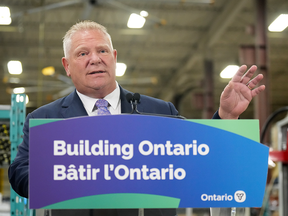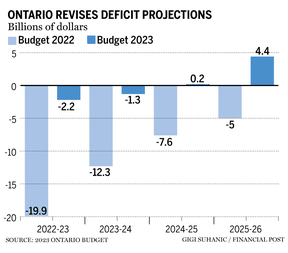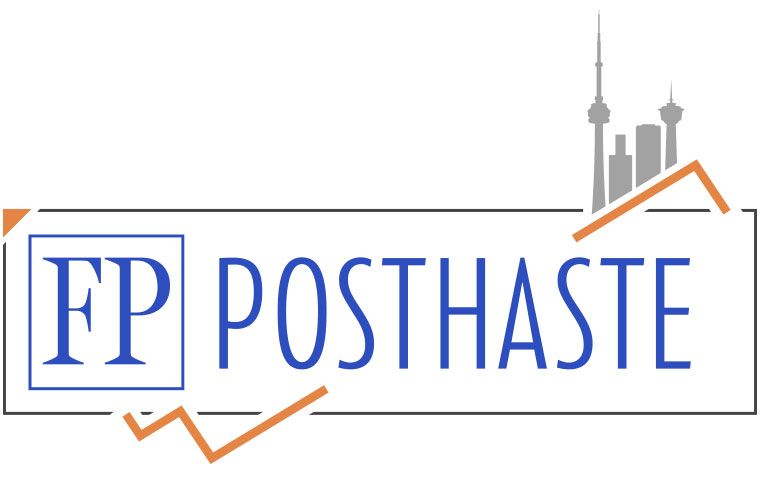Government reconfirms commitment to Ring of Fire, also aims to bolster economic growth with tax credits for manufacturers

Article content
The Ontario government is aiming to bolster economic growth in the province through investment in critical mineral infrastructure and tax credits for manufacturers as part of a budget tabled March 23 that forecasts a dramatically lower deficit for the fiscal year 2022-2023 on higher tax revenue.
Advertisement 2
Article content
Premier Doug Ford’s government is now projecting a deficit of $2.2 billion in fiscal 2022-2023, down dramatically from Budget 2022’s expected near-$20 billion deficit and below the $6.5 billion projected in the province’s third quarter financial outlook in February.
Article content
The improved financial position comes as a result of greater tax revenues following higher tax assessments in 2021 and the drawing down of an unused $1 billion capital reserve buffer designed to protect last year’s fiscal plan against adverse impacts.
Article content
The deficit is expected to fall further to $1.3 billion in fiscal 2023-2024. The province then expects to swing back to a surplus of $0.2 billion in fiscal 2024-2025 and then $4.4 billion the following year.
Article content
Advertisement 3
Article content

The budget document noted that while this is a positive development, economic concerns still loom large.
Mirroring some of the priorities laid out in its previous budget last April, the Ontario government said it’s advancing its critical minerals strategy with an additional $6 million investment in junior mining exploration projects over the next two fiscal years and reiterated its $1 billion commitment to build infrastructure in the Ring of Fire region in northern Ontario.
“For too long, Ontario failed to seize its critical minerals opportunity despite the value it can bring the province,” Ontario Finance Minister Peter Bethlenfalvy wrote in the budget’s foreword. “Unlocking Northern Ontario’s critical minerals is key to the economy of the future.”
Advertisement 4
Article content
Health care transfers
Another key detail unveiled on March 22, a day before the budget was tabled, was the Manufacturing Investment Tax Credit, which will create a new 10 per cent refundable corporate income tax credit of up to $2 million aimed at local manufacturers. If passed, the government anticipates this proposal will bring an estimated $780 million in income tax support for qualifying businesses over the next three years.
Ford’s government plans to put some of the newly negotiated federal health care transfers to work to remedy ongoing pressures in the province’s healthcare services. Ottawa has made a $4.4 billion down payment and committed $15.3 billion towards incremental health care investments over the next three years to clear surgery backlogs and enhance the healthcare system.
Advertisement 5
Article content
The province said it aims to make it easier for pharmacists to prescribe some over-the-counter presciptions for common ailments starting in the fall, and would dedicate $300 million to raising the contract rate for home and community care workers.
It will also put an additional $72 million in fiscal 2023 toward making surgeries available at community surgical and diagnostic centres and spend $80 million to expand enrolment for nursing programs over the next three years.
To meet the government’s previously announced goal to develop 1.5 million homes by 2031, the province outlined a plan to reduce barriers for internationally trained workers in the construction sector to bring the 72,000 additional workers needed by 2027. The government said it was investing an additional $202 million each year in housing for homeless populations or those who are at risk of homelessness.
Ontario’s gross domestic product is projected to grow by 0.2 per cent in 2023 and by 1.3 per cent the following year.
• Email: shughes@postmedia.com | Twitter: StephHughes95
Ontario deficit forecast plunges to $2.2 billion in budget 2023
2023-03-23 20:53:43








Comments
Postmedia is committed to maintaining a lively but civil forum for discussion and encourage all readers to share their views on our articles. Comments may take up to an hour for moderation before appearing on the site. We ask you to keep your comments relevant and respectful. We have enabled email notifications—you will now receive an email if you receive a reply to your comment, there is an update to a comment thread you follow or if a user you follow comments. Visit our Community Guidelines for more information and details on how to adjust your email settings.
Join the Conversation